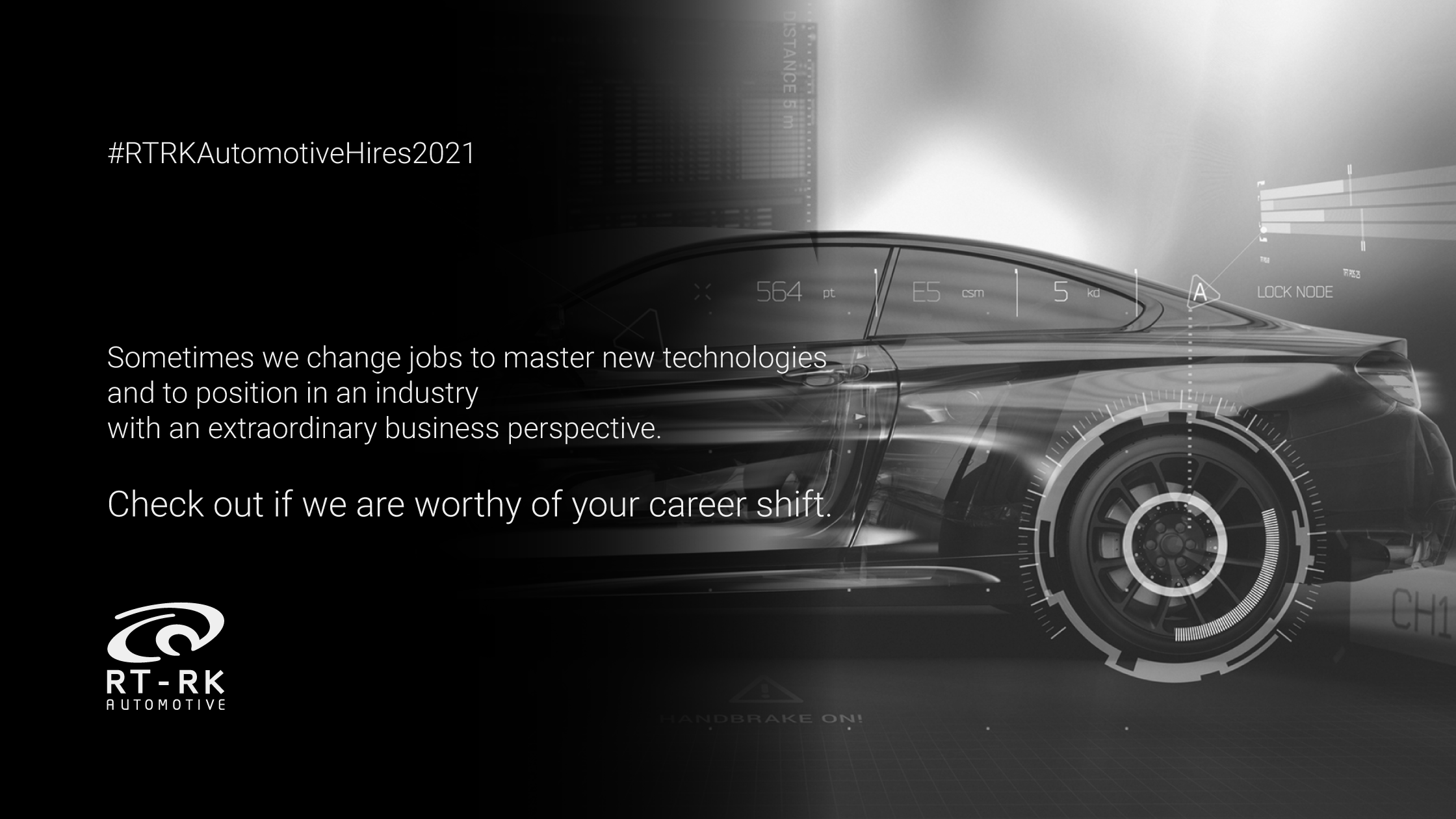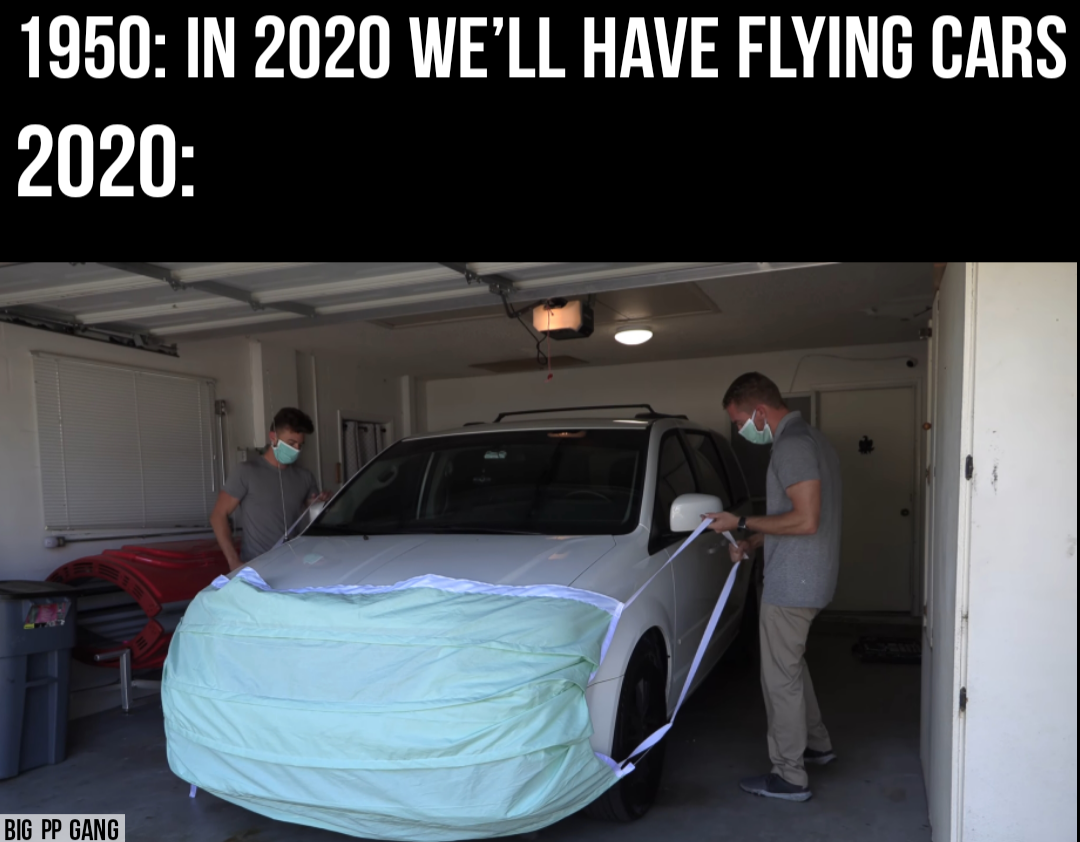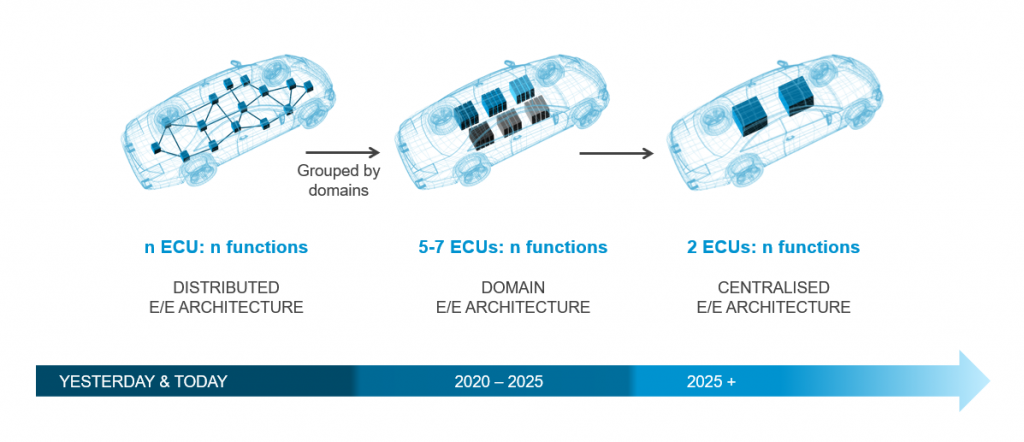
Autonomous driving - near or far future?
In the multitude of memes that the internet showered us during the pandemic
2020, we also saw this one:

Why is it important for this text?
Because in front of this ironic sight, we would step on the brake, and maybe even
pull the handbrake, who still has one. If we attribute the thought of flying cars to
excessive online presence during the long quarantine days, we would say that the
development of the automotive industry during the pandemic did not slow down
one bit. On the contrary, automakers have neither canceled nor scaled back their
R&D projects during the pandemic, and the need for automotive software engineers is greater than ever. We can see this in the domestic labor market and in the company RT-RK Automotive, which has been working on the development of
software for autonomous driving for many years, now as part of the TTTech Auto Group.
How is that possible?
With the development of new technologies such as powerful multi-core processors, sensors, cameras, and scanning systems, the auto industry is undergoing massive
changes - all with the aim of improving traffic safety.
The imminent penetration of multimedia content and Android into cars, with the aim of making driving time both fun and useful, raises the issue of safety to an even more urgent level. The most common cause of traffic accidents is human error - driving under the influence, drowsiness, and use of entertainment devices.
That being said, it makes sense that we're aiming to automate driving and eliminate human error, right? We can see an increase in the offer of cars with advanced features such as automatic braking, lane monitoring, warning over speeding, etc.
Although they do not completely eliminate human error, these functions serve as
"assistance" when driving, and we can unite them under the name - autonomous systems.
What were the cars like before, and what are they like now?
Namely, we can classify cars by automation levels, of which there are six:
Level 0
- Man controls the vehicle: direction, brakes, gas, power.
To get a better idea of what type of vehicle it is, think of the cars that were driven in the eighties and nineties. A typical example for our premises would be the famous Golf two. A reliable vehicle, but you will agree, is quite difficult to drive.
Level 1
- Ease of driving: power steering, acceleration control.
So, we no longer control the mechanical assemblies directly, but control through
certain electronic units - but we are still in full control of the vehicle.
Level 2
- Driving assistance: cruise control, distance, lane monitoring
-The driver controls the ride and is ready to take the controls.
At the second level of automation, we already have certain functions that can replace the driver to some extent, such as the cruise control that allows us not to hold the gas while we are on the highway. In addition, during the last 6-7 years we have seen the development of more advanced features such as distance-keeping and automatic braking. It is important to note that at level two the driver is still fully in control, while all these functions are more "assistance" in driving.
As an example of well-developed cars that are on the second level of automation,
we can take Tesla's "Model S", which has the so-called autopilot system that
ensures lane keeping, automatic parking, automatic realignment, etc.
Level 3
- Autonomous driving under predefined conditions in certain situations.
-The driver does not have to control the driving, but he has to take control on
request.
The pioneer in this area is Audi, with its A8 2018 model, the first car in the world
with autonomy level 3, and RT-RK participated in the development of its zFAS
(zentrale Fahrerassistenzsteuergerät - Central Controller Driver Assistance, 'all
functions, one unit).
At this level, the driver must still control the driving, but under predetermined
conditions such as, for example, traffic jams - driving under the "AI traffic jam pilot" mode is fully autonomous.
What it means? As long as you're in a traffic jam, you can relax and let the car take
control. After exiting the traffic jam (or predetermined conditions), you take control of the car again.
Level 4
- A fully autonomous vehicle without a designated driver.
-It can be used in pre-defined driving cases.
This type of vehicle does not require the presence of a driver but requires it to be
used in certain, predefined conditions.
What would those cases be? These could be vehicles for city transport of
passengers, vehicles for the transport of specific goods - that is, vehicles that would
move along a predetermined route, where the conditions are already known for that type of vehicle.
Level 5
- A fully autonomous vehicle, without a driver and for extreme conditions (like today's driving).
The definition of this type of vehicle clearly tells us everything. Vehicles at the fifth
level of automation would not require the presence of a driver at all and would be
able to drive even in unpredictable conditions. Therefore, everything would take
place as it is currently taking place, except that there would be no driver in the car
seat.
What are we striving for?
Change the paradigm.
In order to achieve such a high jump in vehicle automation, there must be a change in the basic pattern that has been represented in the market until now. Within the
vehicle E/E architecture, there must be a transition from a dedicated, fragmented,
hardware-based system to a software-defined converged architecture. So, the software is taking precedence in the auto industry.

What exactly does that mean?
We are striving to develop a central computer for the car - all processing of sensor
signals and all commands from the central computer to the actuators - all performed by a single software stack in the central computer.
How will we achieve this?
The development of such a product is challenging for several reasons. In addition to the fact that the process of designing these systems is challenging, the main thing that is in focus is the safety of these systems, as well as proving to the public that these systems are really safe.
Reliability, safety, sustainability, availability, and security are the features that a software development platform for autonomous driving must have if it aims to support automakers in the development of their solutions throughout the entire
product life cycle.
Such a software platform called MotionWise™ is being developed by RT-RK in
cooperation with the company TTTech Auto. MotionWise™ ensures that all parts of a complex real-time computer system interact in a predictable and coordinated manner without unwanted interference.
The platform guarantees safe operation in case of failure (fail-operational
performance) while simultaneously managing the high complexity of other elements of the platform. MotionWise™ is based on a time-aware approach, a generalized variant of time-triggered technology, which enables deterministic behavior of the entire system. It complies with ASIL D (Auto Industry Safety Integrity Level), the highest level of safety ISO 26262 - functional safety standard for road vehicles.
What does this mean for global players working on autonomous driving software development?
By using the MotionWise™ development platform, OEMs and Tier1 companies significantly reduce the time and cost of developing their autonomous driving projects, because the applications they develop on top of the MotionWise™ software stack does not need to take into account safety aspects. MotionWise™ takes care of that for them.
Back to meme.
One meme, long story. For RT-RK, 30 years long, this year marks the jubilee.
Quo vadis RT-RK? Probably in the new 30. In the new Audi, BMW, Hyundai and other models.
If you love cars, are hardworking, and don't give up easily, you are welcome to join this team. We take you to their open positions, to an industry that is awaiting a new technological revolution. Without a mask.


